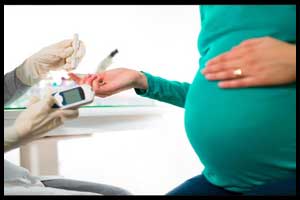- Home
- Editorial
- News
- Practice Guidelines
- Anesthesiology Guidelines
- Cancer Guidelines
- Cardiac Sciences Guidelines
- Critical Care Guidelines
- Dentistry Guidelines
- Dermatology Guidelines
- Diabetes and Endo Guidelines
- Diagnostics Guidelines
- ENT Guidelines
- Featured Practice Guidelines
- Gastroenterology Guidelines
- Geriatrics Guidelines
- Medicine Guidelines
- Nephrology Guidelines
- Neurosciences Guidelines
- Obs and Gynae Guidelines
- Ophthalmology Guidelines
- Orthopaedics Guidelines
- Paediatrics Guidelines
- Psychiatry Guidelines
- Pulmonology Guidelines
- Radiology Guidelines
- Surgery Guidelines
- Urology Guidelines
Higher levels of free T3 levels pathognomic of gestational diabetes

Higher levels of free triiodothyronine (fT3), but not free thyroxine (fT4) levels or thyroid-stimulating hormone (TSH) levels, may be an indicator of gestational diabetes mellitus (GDM) risk, according to a study published in the Journal of Clinical Endocrinology & Metabolism.
Shristi Rawal, National Institutes of Health in Bethesda, Maryland, and colleagues conducted the study to examine associations of fT3 and the fT3/fT4 ratio with GDM.
T3 is the biologically active thyroid hormone involved in glucose metabolism. The free T3 (fT3)/free T4 (fT4) ratio, a marker indicating conversion of fT4 to fT3, is also implicated in glucose homeostasis.
Key Findings of the Study:
- Both fT3 and the fT3/fT4 ratio were positively associated with GDM (adjusted odds ratios, 4.25 and 3.89 comparing the highest versus the lowest fT3 quartile at the first and second trimester, respectively).
- At the first and second trimester, respectively, the corresponding risk estimates for fT3-to-fT4 ratio were 8.63 and 13.6.
- There were no significant associations for TSH or fT4 with GDM.
- In the second, but not the first, trimester, isolated hypothyroxinemia was significantly related to increased GDM risk (adjusted odds ratio, 2.97 comparing hypothyroxinemic with euthyroid women).
"Higher fT3 levels, potentially resulting from de novo synthesis or increased fT4 to fT3 conversion, may be an indicator of GDM risk starting early in pregnancy," concluded the authors.

Disclaimer: This site is primarily intended for healthcare professionals. Any content/information on this website does not replace the advice of medical and/or health professionals and should not be construed as medical/diagnostic advice/endorsement or prescription. Use of this site is subject to our terms of use, privacy policy, advertisement policy. © 2020 Minerva Medical Treatment Pvt Ltd